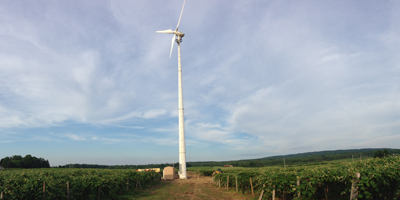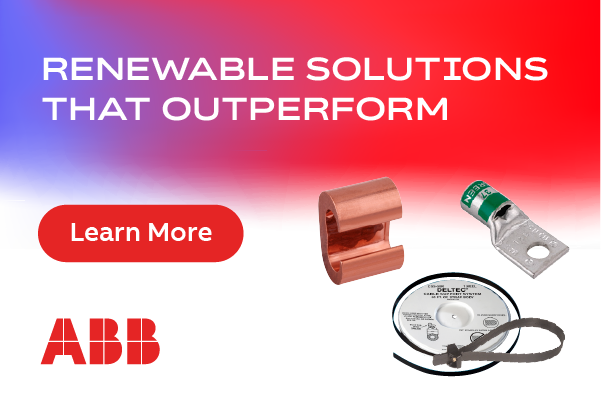New Financing Options Offered for Distributed Wind Power: Replicating the success of solar energy
 Last fall, the US Department of Energy (DOE) released their 2013 Distributed Wind Market report to recap the year’s highlights and to provide an industry state of the union for distributed wind energy. Distributed generation (DG) refers to electrical power generation that occurs close to where the power is consumed. Distributed wind energy systems are commonly installed on, but are not limited to, residential, agricultural, commercial, industrial, and community sites—ranging from a five-kilowatt (kW) turbine at a home to a multi-megawatt turbine at a manufacturing facility.
Last fall, the US Department of Energy (DOE) released their 2013 Distributed Wind Market report to recap the year’s highlights and to provide an industry state of the union for distributed wind energy. Distributed generation (DG) refers to electrical power generation that occurs close to where the power is consumed. Distributed wind energy systems are commonly installed on, but are not limited to, residential, agricultural, commercial, industrial, and community sites—ranging from a five-kilowatt (kW) turbine at a home to a multi-megawatt turbine at a manufacturing facility.
According to the Distributed Wind Energy Association (DWEA), DG systems are typically small by comparison to centralized power plants, “But they provide significant benefits including reduced energy loss during transmission and reduced load on utility transmission and distribution lines.” (Learn more at http://distributedwind.org)
Although turbine sales trends have been lackluster over the last year, the DOE found a bright spot in the advent of the third-party financing models for the wind power industry.
“The most promising 2013 development was the initial emergence of third-party financing offerings for distributed wind,” read the report. “Most industry leaders consider leasing and related business models as a primary opportunity for reducing the resource, financial, and operational risks to customers and supporting a more level playing field, building on the success of solar PV.”
Having seen success in the distributed solar industry, after the introduction of third-party financing, investors are eager to get involved in the distributed wind market, with tax equity funds to support the building of new small wind projects (under 100 kW turbines).
What does a wind lease look like?
The new wind leasing options work quite similarly to the third-party ownership model that have been developed and implemented by the solar power industry over the past 10 years. Lessees remain connected to their utility and are billed a separate lease payment, payable monthly to the lessor. The system owner is able to monetize the federal investment tax credit (ITC), depreciation, and other state incentives, which in turns allows them to pass on these savings to the customer.
Most wind leases have a 20-year term, which includes the costs of permitting, installation, maintenance, warranty, and insurance. Customers usually have three different leasing options:
1. No money down for immediate savings, but higher monthly payments;
2. Partially pre-paying the lease for greater savings over time and lower monthly payments; or
3. Fully pre-paying the lease, so as to maximize the return on the investment and to avoid monthly payments for the lease term.
Leasing a turbine removes potential ownership risks for the property owner. In addition to not having the added responsibility of maintaining a turbine, today’s leasing options come with an annual, kilowatt-hour (kWh) production guarantee.
A good candidate for small wind
Customer-sited wind energy has historically been an expensive option for customers seeking to harvest their own wind resources because of the large upfront costs. With the advent of the wind lease, home and business owners can now consider small wind as an affordable option for their primary source of electricity.
Nevertheless, leasing a wind turbine isn’t the right renewable option for everyone. Promising small wind market segments typically have the following characteristics:
· A high wind resource
It goes without saying, perhaps, but for a customer to benefit from a wind turbine, they must be sited in an ideal location. Due to the nature of turbine technology and wind turbine cut-in speeds, certain wind thresholds must be met. Typically, the minimum average wind speeds required are five meters-per-second (m/s).
Unlike solar power technology, which can harness some amount of the sun’s energy at nearly any location, turbines are only effective after the wind speed surpasses the turbine’s cut-in speed threshold. For example, Bergey WindPower’s Excel 10 kW turbine cuts-in at 2.5 m/s (5mph), while the somewhat more powerful Endurance Wind Power’s E-3120 50 kW turbine cuts-in at 3.5 m/s (7.8mph).
· Access to land
Although significantly smaller than their utility-scale wind counterparts, small wind turbine hub heights are still between 80 and 160 feet tall. For proper siting, installation, and an unobstructed wind flow, it’s recommended that property owners have at least three acres of land to accommodate this power source.
· A sizeable electric demand
Unlike solar arrays, wind turbines are not custom designed to meet a customer’s needs. In order for a 10 kW turbine wind lease to make financial sense, the potential customer should be using over 10,000 kWh of electricity per year (to ensure their lease payments can be lower than their former utility bills).
According to the US Energy Information Administration, in 2012 the average US residential utility customer used 10,837 kWh a year. Louisiana had the highest annual consumption at 15,046 kWh, and Maine had the lowest at 6,367 kWh.
Finding success
Distributed solar energy has seen significant growth in the last decade due, in large part, to the offering of third-party financing. This growth has been exponential, primarily because the levelized cost of energy (LCOE) for solar power has been rapidly declining. As the market has scaled and related technologies have advanced, solar power has become more affordable.
In the last year or so, as third-party financing became an option in the distributed wind industry, the wind market has been seeing a similar spike in demand. Property owners can now afford to choose wind as a renewable energy option. In New York State, for example, only 13 small wind turbines were installed in the entire year of 2013. However, that number has spiked and over 100 wind leases were signed in 2014. Developer projections are calling for five times that amount in terms of expectations for 2015.
Clearly, the demand for leasing small and distributed wind turbines is there. To replicate the success of solar, however, questions for the wind industry remain. For instance: Can the investments in small wind keep up? And, can technology and processes keep improving and become more efficient to further drive down costs?
It will be interesting to see what the future brings in financing and in success for distributed wind power as the year progresses.
Russell Tencer is CEO of United Wind, a provider of wind energy leasing. Founded on the belief that wind energy must be affordable to compete with conventional energy sources, United Wind provides customers with practical wind energy options that make sense today and into the future.
United Wind
www.unitedwind.com
Author: Russell Tencer
Volume: January/February 2015








